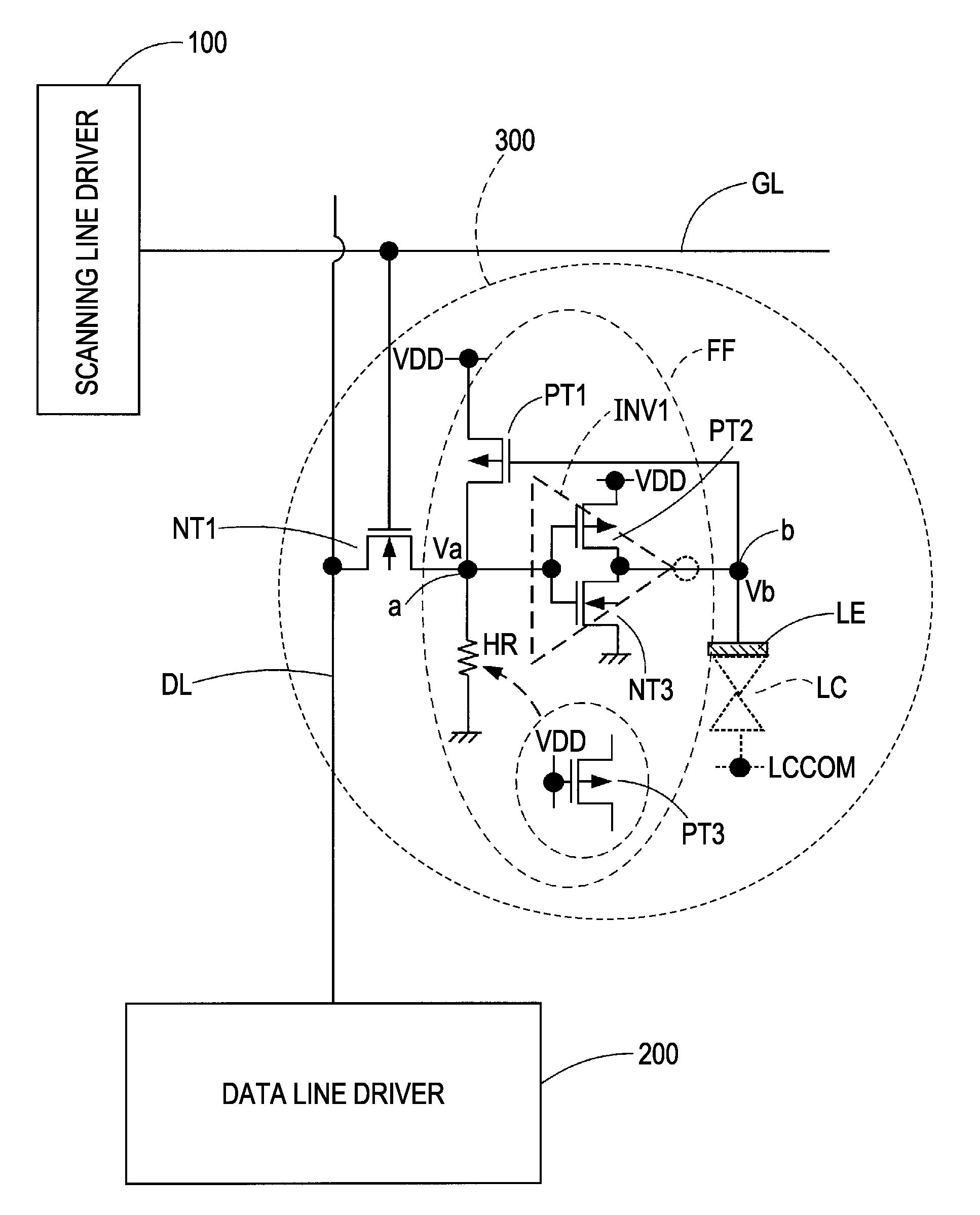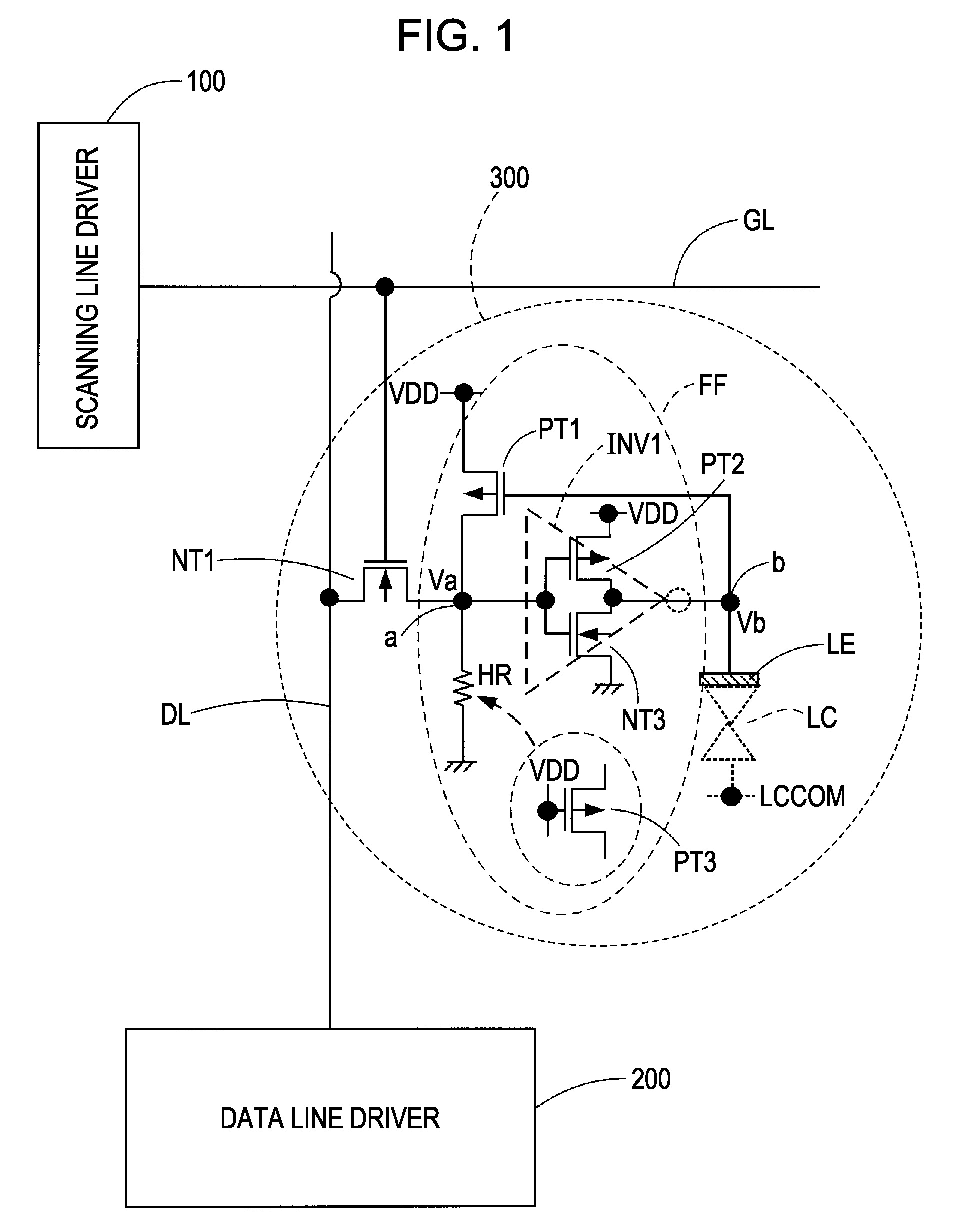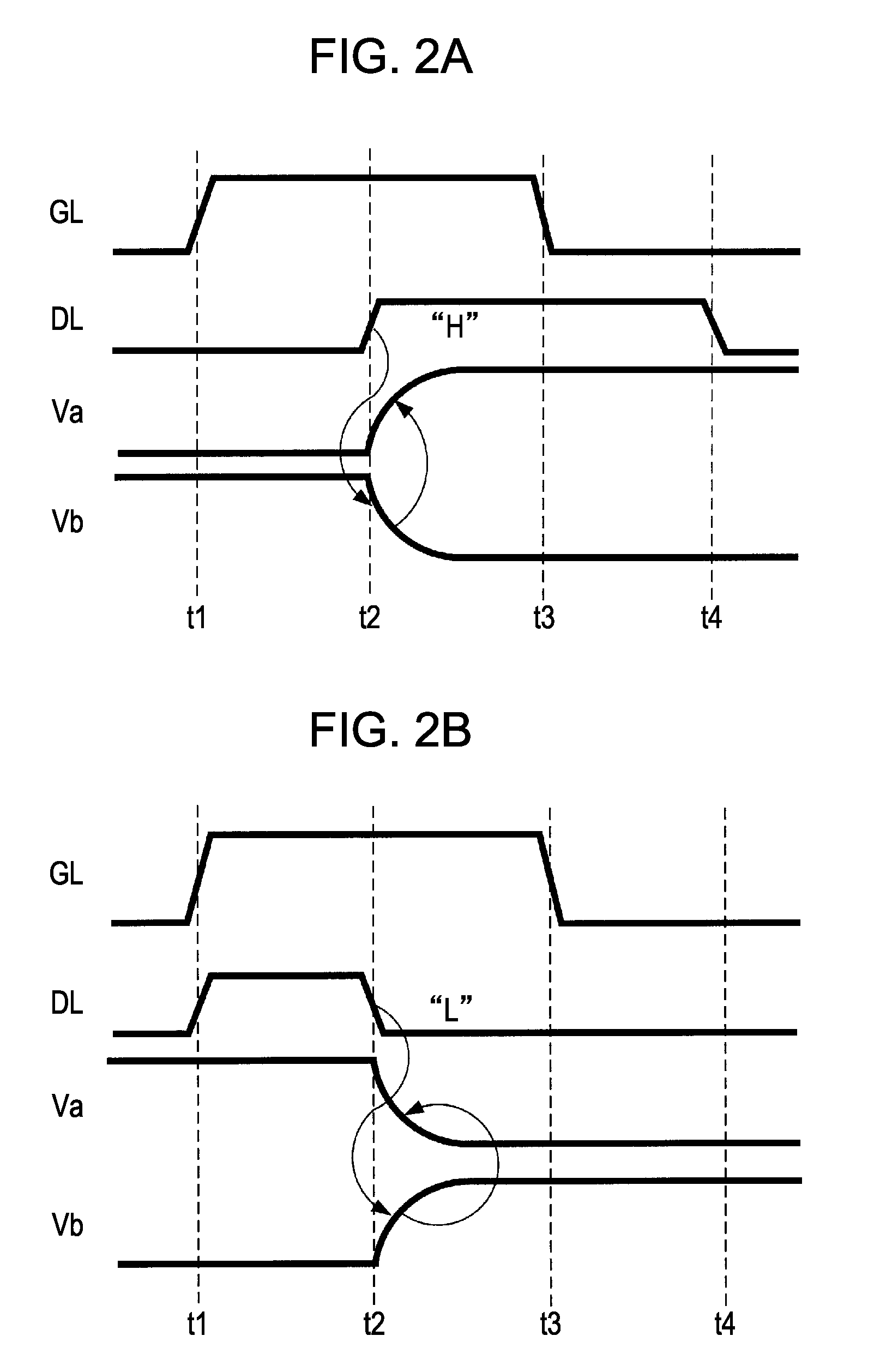Pixel circuit having flip-flop with inverter and feedback transistor, electro-optical device having said pixel circuit, and electronic apparatus having said electro-optical device
a pixel circuit and feedback transistor technology, applied in the field of pixel circuits, can solve the problems of easy generation of non-uniform display, easy change of maintained voltage caused by leak current, and easy generation of maintained voltage, so as to improve display quality of small-size electronic devices, high reliability, and high accuracy
- Summary
- Abstract
- Description
- Claims
- Application Information
AI Technical Summary
Benefits of technology
Problems solved by technology
Method used
Image
Examples
first embodiment
[0057]FIG. 1 is a circuit diagram showing an example of the configuration of a pixel circuit according to an embodiment of the invention. As shown in the figure, the pixel circuit 300 is disposed in correspondence with an intersection of a scanning line GL and a data line DL. The scanning line GL is driven by a scanning line driver 100, and the data line DL is driven by a data line driver 200.
[0058]The pixel circuit 300, for example, includes a pixel transistor NT1 that is formed by an NMOS transistor (n-channel insulated gate-type field effect transistor regardless of the type of an insulation film), a flip-flop FF, and a pixel electrode LE (electrode for applying a voltage to a liquid crystal LC).
[0059]The flip-flop FF includes a CMOS inverter INV1 that operates between the high-level power source voltage VDD and the low-level power source voltage GND and a feedback transistor PT1 that is formed of a PMOS transistor. The CMOS inverter INV1 and the feedback transistor PT1 form a po...
second embodiment
[0078]In a second embodiment of the invention, a countermeasure for a change in the writing voltage due to the feed-through voltage of the pixel transistor will be described. FIGS. 4A to 4C are diagrams for describing adjustment of the threshold voltage of the CMOS inverter as a countermeasure for the change in the writing voltage due to the feed-through voltage of the pixel transistor.
[0079]In FIG. 4A, it is assumed that “1” is written into the pixel circuit. When a writing operation is completed and the voltage of the scanning line GL changes from H to L, a push-down voltage (feed-through voltage: −ΔV) is generated due to parasitic capacitance Cgd between the gate and drain of the pixel transistor (NMOS transistor) NT1. Accordingly, the electric potential of point “a” becomes (VDD−ΔV). FIG. 4C shows transfer characteristics of the CMOS inverter INV1. As denoted by a dotted line in FIG. 4C, for example, in a case where the threshold voltage is set to VDD / 2, when the absolute value ...
third embodiment
[0082]FIGS. 5A and 5B are diagrams showing an improved example for a case where data “0” is written into the pixel circuit that maintains data “1”.
[0083]As shown in FIG. 5A, data “1” (=VDD) is maintained at the holding node (point a) of the pixel circuit. In this state, as shown in FIG. 5B, a case where data “0” (=GND) is written into the pixel circuit will be considered.
[0084]In this case, when the scanning line GL has a selection electric potential (H), the pixel transistor NT1 is turned on. Accordingly, an on-current Ionn1 flows from the holding node (point a) to the data line DL. When the on-current Ionn1 of the pixel transistor NT1 is larger than the on-current Ionp1 of the feedback transistor PT1, the voltage level of the holding node (point a) transits from the H level to the L level. Accordingly, data “0” can be written.
[0085]Thus, in order to perform a writing operation assuredly, the characteristics (design values such as the sizes) of the pixel transistor NT1 and the feed...
PUM
 Login to View More
Login to View More Abstract
Description
Claims
Application Information
 Login to View More
Login to View More - R&D
- Intellectual Property
- Life Sciences
- Materials
- Tech Scout
- Unparalleled Data Quality
- Higher Quality Content
- 60% Fewer Hallucinations
Browse by: Latest US Patents, China's latest patents, Technical Efficacy Thesaurus, Application Domain, Technology Topic, Popular Technical Reports.
© 2025 PatSnap. All rights reserved.Legal|Privacy policy|Modern Slavery Act Transparency Statement|Sitemap|About US| Contact US: help@patsnap.com



